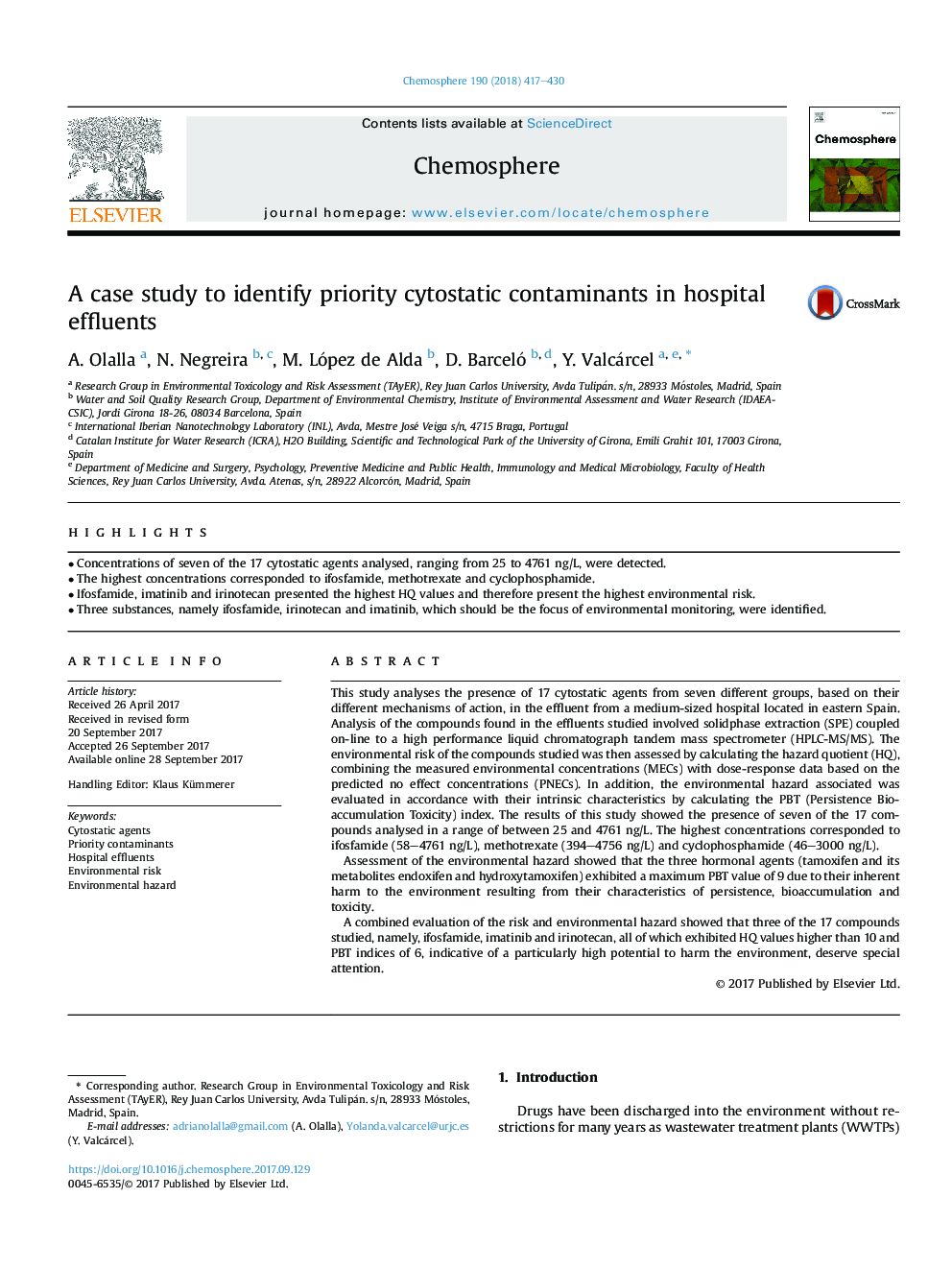| Article ID | Journal | Published Year | Pages | File Type |
|---|---|---|---|---|
| 5745792 | Chemosphere | 2018 | 14 Pages |
â¢Concentrations of seven of the 17 cytostatic agents analysed, ranging from 25 to 4761 ng/L, were detected.â¢The highest concentrations corresponded to ifosfamide, methotrexate and cyclophosphamide.â¢Ifosfamide, imatinib and irinotecan presented the highest HQ values and therefore present the highest environmental risk.â¢Three substances, namely ifosfamide, irinotecan and imatinib, which should be the focus of environmental monitoring, were identified.
This study analyses the presence of 17 cytostatic agents from seven different groups, based on their different mechanisms of action, in the effluent from a medium-sized hospital located in eastern Spain. Analysis of the compounds found in the effluents studied involved solidphase extraction (SPE) coupled on-line to a high performance liquid chromatograph tandem mass spectrometer (HPLC-MS/MS). The environmental risk of the compounds studied was then assessed by calculating the hazard quotient (HQ), combining the measured environmental concentrations (MECs) with dose-response data based on the predicted no effect concentrations (PNECs). In addition, the environmental hazard associated was evaluated in accordance with their intrinsic characteristics by calculating the PBT (Persistence Bioaccumulation Toxicity) index. The results of this study showed the presence of seven of the 17 compounds analysed in a range of between 25 and 4761 ng/L. The highest concentrations corresponded to ifosfamide (58-4761Â ng/L), methotrexate (394-4756Â ng/L) and cyclophosphamide (46-3000Â ng/L).Assessment of the environmental hazard showed that the three hormonal agents (tamoxifen and its metabolites endoxifen and hydroxytamoxifen) exhibited a maximum PBT value of 9 due to their inherent harm to the environment resulting from their characteristics of persistence, bioaccumulation and toxicity.A combined evaluation of the risk and environmental hazard showed that three of the 17 compounds studied, namely, ifosfamide, imatinib and irinotecan, all of which exhibited HQ values higher than 10 and PBT indices of 6, indicative of a particularly high potential to harm the environment, deserve special attention.
